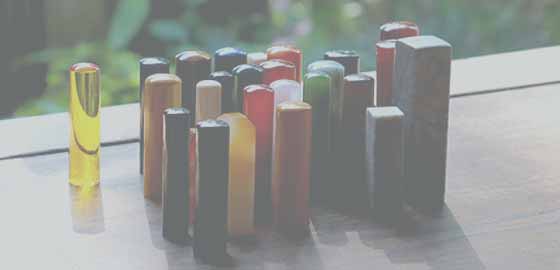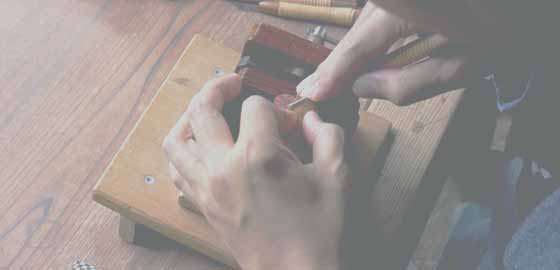POSSESSED BY THOSE HIGH IN STATUS
The culture of seals spread all over the world
Since 5,000 BC — or even earlier — human beings have used seals to authenticate themselves.
Seals were invented in Mesopotamia, an ancient region located in the eastern Mediterranean, near today’s Iraq, Iran, Syria and Turkey.
Originally, seals were made with cylindrical limestone, and were finely carved or engraved on their sides.
To make ink impressions, they rolled the seals, gently applying pressure.
Those who possessed their own seals were, without doubt, high in social status.
They wore their seals on a string or chain around their neck like a necklace.
It was not only a gorgeous accessory, but was also a way to display one’s power!
The culture of seals spread all over the world.
Their use and shape varied according to time and place.
Under feudal systems, only kings or highly positioned nobilities were entitled to use their own seals.
In other words, ordinary citizens might not have had to authenticate or symbolize themselves.
Now, the world has become democratic where everyone has a right to express their individuality.
However, the culture of seals has vanished in many countries.
As you know, people now use signatures instead of seals as it is more accessible.
In Japan, the most ancient seal that has been found made with 95% gold and was bestowed by the emperor of Han Dynasty in 57 AD to authorize Japan as its vassal state.
Here, too, seals were used by emperors and aristocratic family members in early stages for public matters.
During the age of civil war, feudal lords used their seals for correspondence.
Normally the name was engraved on the seals, but some samurai created their seals with their principles or images they liked.
From the 17th century, the use of seals in Japan has not been limited to just Shogun and feudal lords.
Merchants started to use seals for business contracts and also ordinary citizens had their own as well.
As seals guaranteed their properties, they were regarded as the second most important thing after life for Japanese people.
And so, the culture of seals went on.
It was kept even after Japan changed drastically into a “modern and Westernized” country in the 19th century under the new government who wanted to implement a signature culture.
However…
Top : Ukiyoe of Takeda Shingen (1521-1573) .
Middle : Exclusive seals of Nobunaga , “Unify the Nation by Force” and Shingen’s “Image of Dragon”.
Bottom : Portrait of Oda Nobunaga (1534-1582).






